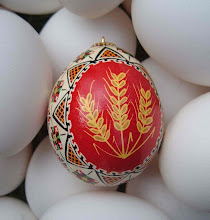It's New Year's Resolution time. I may get mine posted soon, but of course I want to eat lighter for the new year - always do - and I'm especially using my
bento boxes as a way to eat lighter lunches.
This macaroni and cheese is a modification of Laurel's Kitchen's Sandy's Macaroni, which uses toasted whole wheat flour and vegetables to develop flavor, and just 2 Tablespoons of parmesan for 8 ounces of macaroni. Not enough cheese for me, so I added 4 ounces of cheddar - about half of it in the sauce, and half on top of the mac and cheese to brown. I also added 1 Tablespoon of neufchatel to add the merest tang.
I toasted the topping separately so I could carry it in my lunch box and keep the topping crisp. When I had this for supper last night I sprinkled a teaspoon of Cabot's cheddar cheese powder on top, and that really punched up the cheese flavor. I'll probably add it to the sauce the next time I make this, and will update the recipe if I change it.
This doesn't have anywhere near the fat and calories of most macaroni and cheese, but then it doesn't have nearly as much cheese. It's a great light recipe, and worthy of being made. The dish made 6 of these 3/4 cup servings.
Resolution Mac and Cheese
8 ounces macaroni of choice, boiled, and cooled if
the dish is not to be eaten immediately
Saute together
2-3T finely minced yellow onion
1/4 cup minced mushrooms
1/2 stalk finely minced celery
1 clove finely minced garlic
1 Tablespoon butter
1/4 cup flour (preferably some whole wheat) toasted in dry pan
added to sauted veggies
2 cups 2% milk
1 Tablespoon grated parmesan
4 ounces grated sharp cheddar, divided in half after grating
Salt and pepper to taste
Optional 1 Tablespoon neufchatel or cream cheese
Optional 1 Tablespoon Cabot's Cheddar Shake (cheese powder)
The crust topping
Coarse bread crumbs from 1 slice bread (or panko)
1 Tablespoon butter
1 Tablespoon grated parmesan cheese
Directions: Boil the macaroni in salted water, and cool. Adding the sauce to cooled macaroni keeps the macaroni from absorbing the sauce. It's important to salt the water even if you usually don't, because cheese usually brings quite a bit of salt to the dish, and if you replace the salt you won't notice as much that the cheese isn't there.
You could skip the toasting of the flour, but it does deepen the flavor. Saute the veggies (or whatever ones you want), adding the garlic only when the other aromatics are just about done. Overcooked garlic is bitter. Adding the flour to the veggies keeps the sauce from lumping when you add the milk, since you haven't made a flour/butter mix. Add the parmesan, cream cheese if you're using it, and one half the grated cheddar. Be sure to cook long enough for the flour to lose its raw taste. Be sure you've added the salt necessary for this to taste like a cheese sauce.
Add the sauce to the macaroni. (I portioned the mac and cheese into 6 muffin cups which could take broiler heat, and sprinkled with the remaining half of the grated cheddar.) Put under the broiler for a few minutes until the cheese is pleasingly golden, brown, delicious. When cool the mac and cheese will cohere and slip out of the pan.
Saute the coarse bread crumbs (or panko) and butter until you like the color, and add 1 Tablespoon grated parmesan. Store this separately and it will be crisp when you eat your dish.
Of course, if you want to bake the mac and cheese to eat for a meal you can add the sauce to hot macaroni, add the topping with the grated cheddar when you bake it. 350 until brown on top. And if you want to eat this as stovetop mac and cheese you can add all the grated cheddar when you make the sauce, and leave out the topping.
(Laurel's Kitchen is one of my favorite Cookbooks - good simple vegetarian fare.
This Mother Earth News story from 1977 tells about the book and gives a few recipes.)











